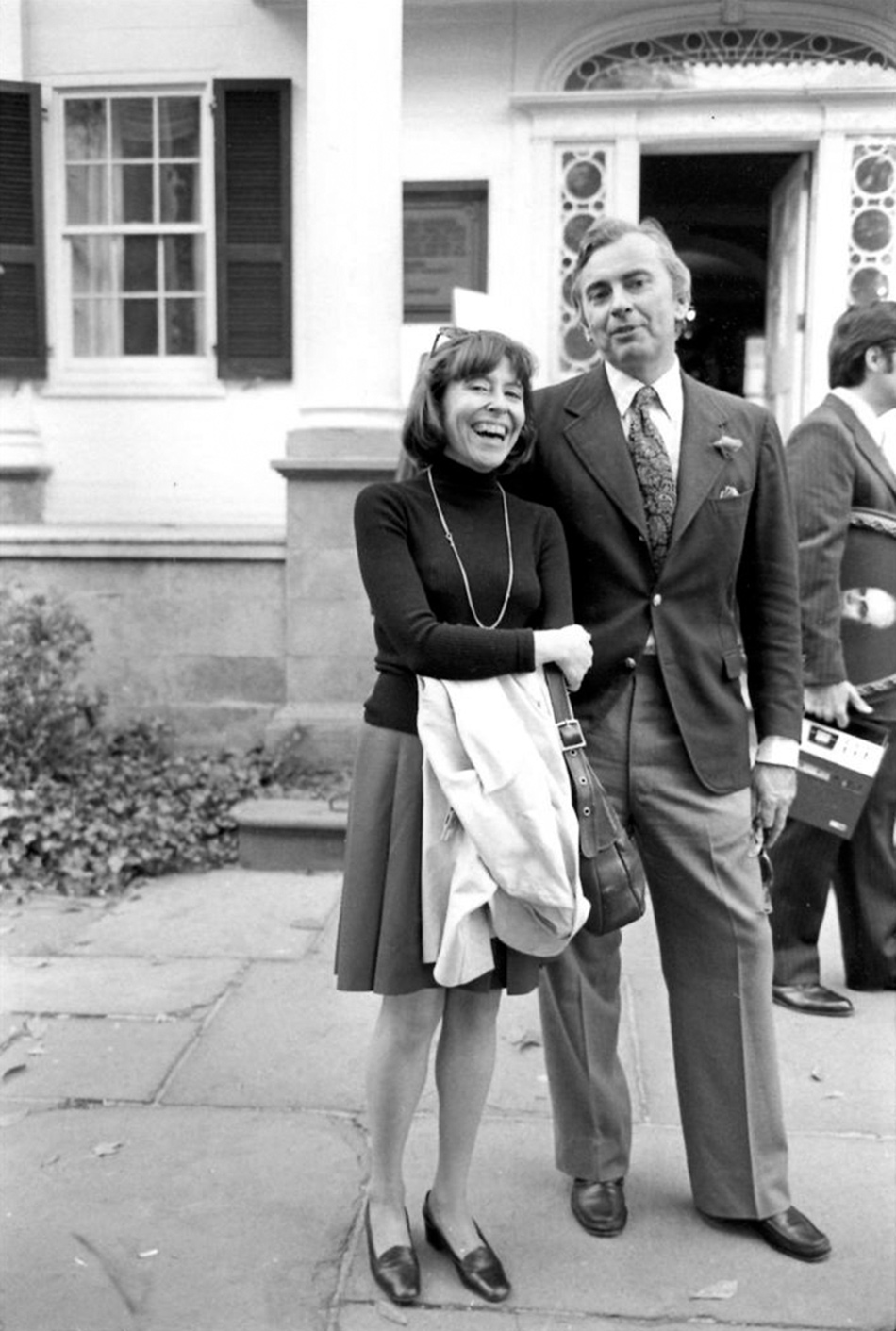Gore Vidal (1925–2012) contributed nearly one hundred reviews, articles, and letters to The New York Review between 1963 and 2006. The following is an extract from his two-part article “The Ashes of Hollywood,” a review of the ten books on the New York Times fiction best-seller list of January 7, 1973. In addition to The Persian Boy, Semi-Tough, and Jonathan Livingston Seagull, the list also included Frederick Forsyth’s The Odessa File, Alexander Solzhenitsyn’s August 1914, Robert Crichton’s The Camerons, Herman Wouk’s The Winds of War, Victoria Holt’s On the Night of the Seventh Moon, Trevanian’s The Eiger Sanction, and Marjorie Holmes’s Two from Galilee. Vidal’s articles, which appeared in the issues of May 17 and May 31, 1973, can be read in full in our archives.
“Shit has its own integrity.” The Wise Hack at the Writers’ Table in the MGM commissary used regularly to affirm this axiom for the benefit of us alien integers from the world of Quality Lit. It was plain to him (if not to the front office) that since we had come to Hollywood only to make money, our pictures would entirely lack the one basic homely ingredient that spells boffo world-wide grosses. The Wise Hack was not far wrong. He knew that the sort of exuberant badness which so often achieves perfect popularity cannot be faked even though, as he was quick to admit, no one ever lost a penny underestimating the intelligence of the American public. He was cynical (so were we); yet he also truly believed that children in jeopardy always hooked an audience, that Lana Turner was convincing when she rejected the advances of Edmund Purdom in The Prodigal “because I’m a priestess of Baal,” and he thought that Irving Thalberg was a genius of Leonardo proportion because he had made such tasteful “products” as The Barretts of Wimpole Street and Marie Antoinette.
The bad movies we made twenty years ago are now regarded in altogether too many circles as important aspects of what the new illiterates want to believe is the only significant art form of the twentieth century. An entire generation has been brought up to admire the product of that era. Like so many dinosaur droppings, the old Hollywood films have petrified into something rich, strange, numinous-golden. For any survivor of the Writers’ Table (alien or indigenous integer), it is astonishing to find young directors like Bertolucci, Bogdanovich, Truffaut reverently repeating or echoing or paying homage to the sort of kitsch we created first time around with a good deal of “help” from our producers and practically none at all from the directors—if one may quickly set aside the myth of the director as auteur. Golden age movies were the work of producer(s) and writer(s).
I think it is necessary to make these remarks about the movies of the Thirties, Forties, and Fifties as a preface to the ten bestselling novels under review since most of these books reflect to some degree the films each author saw in his formative years, while at least seven of the novels appear to me to be deliberate attempts not so much to re-create new film product as to suggest old movies that will make the reader (and publisher and reprinter and, to come full circle, film maker) recall past success and respond accordingly. Certainly none of the ten writers (save the noble engineer Solzhenitsyn and the classicist Mary Renault) is in any way rooted in literature. For the eight, storytelling began with The Birth of a Nation. Came to high noon with, well, High Noon and Mrs. Miniver and Rebecca and A Farewell to Arms. Except for the influence of the dead Ian Fleming (whose own work was a curious amalgam of old movies in the Eric Ambler–Hitchcock style with some sadomasochist games added), these books connect not at all with other books. But with the movies…ah, the movies!
Can your average beautiful teen-age Persian eunuch find happiness with your average Greek world conqueror who is also a dish and aged only twenty-six? The answer Mary Renault triumphantly gives us in The Persian Boy is ne! Twenty-five years ago [my novel] The City and the Pillar was considered shocking because it showed what two nubile boys did together on a hot summer afternoon in McLean, Virginia. Worse, one of them went right on doing that sort of thing for the rest of his life. The scandal! The shame! In 1973 the only true love story on the bestseller list is about two homosexuals, and their monstrous aberration (so upsetting to moralists like Mr. Wouk) is apparently taken for granted by those ladies who buy hardcover novels.
At this point I find myself wishing that one had some way of knowing just who buys and who reads what sort of books. I am particularly puzzled (and pleased) by the success of Mary Renault. Americans have always disliked history (of some fifty subjects offered in high school the students recently listed history fiftieth and least popular) and know nothing at all of the classical world. Yet in a dozen popular books Mary Renault has made the classical era alive, forcing even the dullest of bookchat writers to recognize that bisexuality was once our culture’s norm and that Christianity’s perversion of this human fact is the aberration and not the other way around. I cannot think how Miss Renault has managed to do what she has done, but the culture is the better for her work.
Advertisement
I fear that I am not the audience Mr. Dan Jenkins had in mind when he wrote his amiable book Semi-Tough, but I found it pleasant enough, and particularly interesting for what it does not go into. The narrator is a pro football player who has been persuaded “that it might be good for a pro football stud to have a book which might have a healthy influence on kids.” Question: do young people watch football games nowadays? The unfat and the unsoft young must have other diversions. One wonders, too, if they believe that “a man makes himself a man by whatever he does with himself, and in pro football that means busting his ass for his team.” This is pure pre-Watergate Nixon.
Semi-Tough tells of the preparation for the big game. There is one black player who may or may not like boys and the narrator clams up on what is a very delicate subject in jock circles. It is a pity Mary Renault did not write this book. And a pity, come to think of it, that Mr. Jenkins did not write August 1914, a subject suitable for his kind of farce. No movie in Semi-Tough. As the Wise Hack knows all too well, sports movies bomb at the box office. Perhaps the Warhol factory will succeed where the majors have failed. SHOWER ROOM—LONG SHOT. CUT TO: CLOSE SHOT—SOAP.
The number one bestseller is called Jonathan Livingston Seagull. It is a greeting card bound like a book with a number of photographs of seagulls in flight. The brief text celebrates the desire for excellence of a seagull who does not want simply to fly in order to eat but to fly beautifully for its own sake. He is much disliked for this by his peers; in fact, he is ostracized. Later he is translated to higher and higher spheres where he can spend eternity practicing new flight techniques. It is touching that this little story should be so very popular, because in its way it celebrates art for art’s sake as well as the virtues of nonconformity; and so, paradoxically, it gives pleasure to the artless and the conforming, to the drones who dream of honey-making in their unchanging hive.
There is not much point in generalizing further about these bestsellers. The authors prefer fact or its appearance to actual invention. Reading these ten books one after the other was like being trapped in the “Late Late Show,” staggering from one half-remembered movie scene to another, all the while beginning to suspect with a degree of horror that the Wise Hack at the Writers’ Table will be honored and remembered for his many credits on numerous profitable pix long after Isherwood (adapted “The Gambler” with Gregory Peck), Huxley (adapted Pride and Prejudice with Greer Garson), Vidal (adapted Suddenly Last Summer with Elizabeth Taylor) take their humble places below the salt, as it were, for we did not regard with sufficient seriousness the greatest art form of all time, preferring perversely to write books that reflected not the movies we had seen but life itself, not as observed by that sterile machine the camera but as it is netted by the protean fact of our beautiful if diminishing and polluted language. Kind of dumb, all in all. Like Sam, one should’ve played it again.
This Issue
June 20, 2013
What Is a Warhol?
Cool, Yet Warm
Facing the Real Gun Problem




